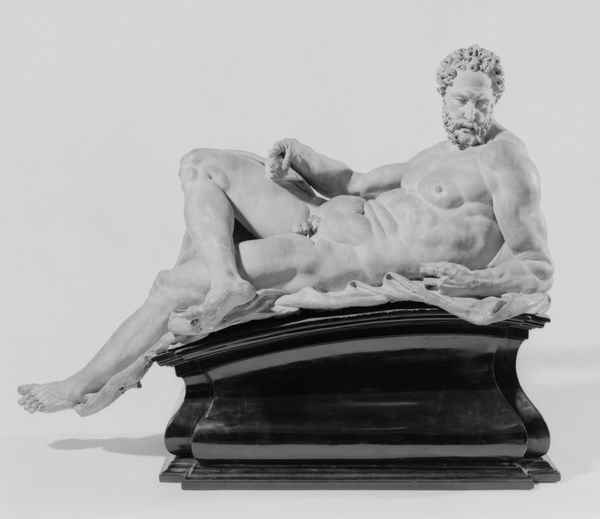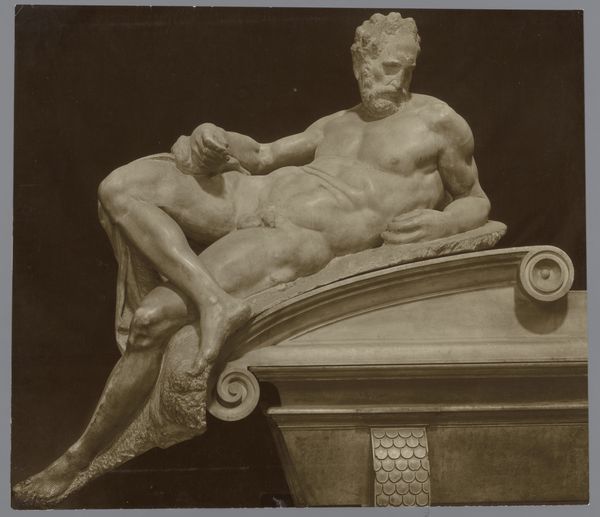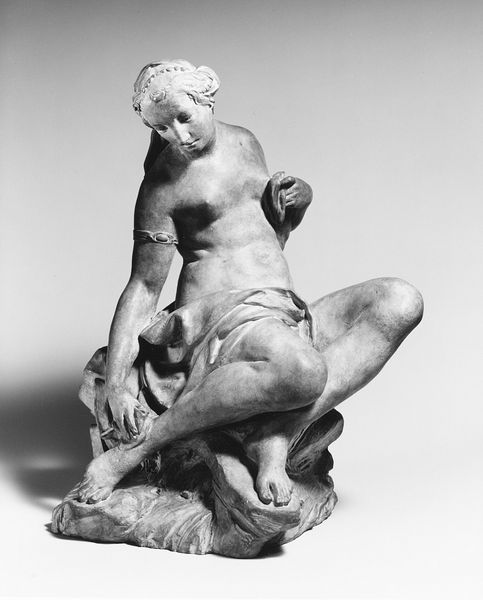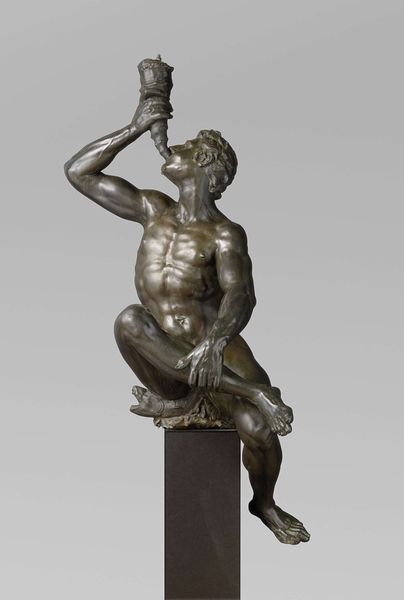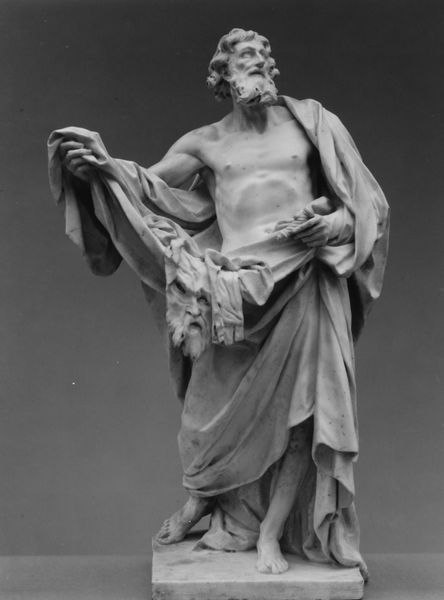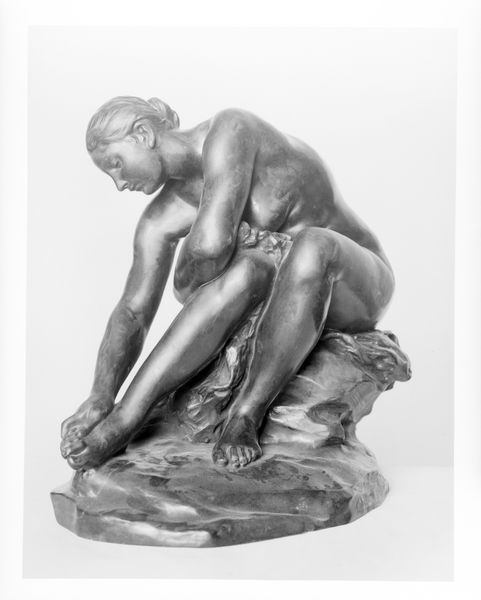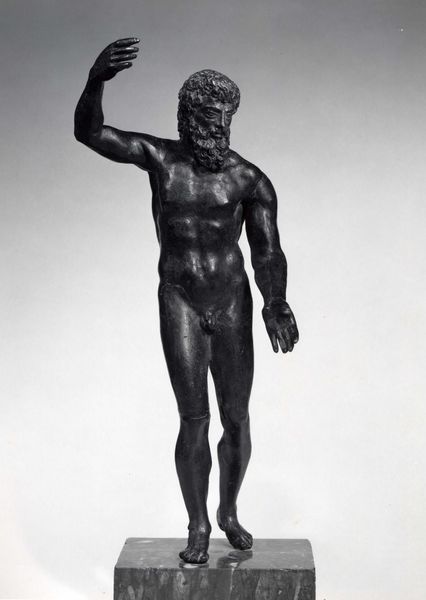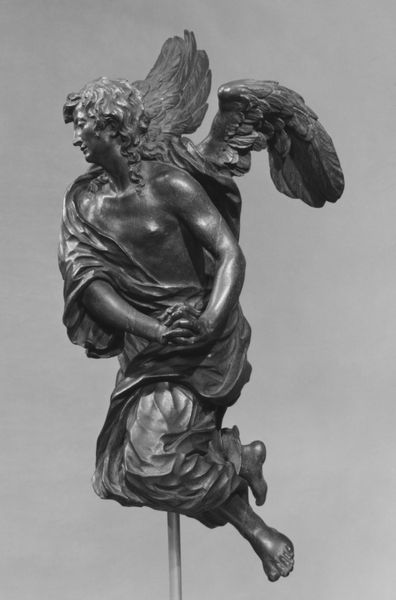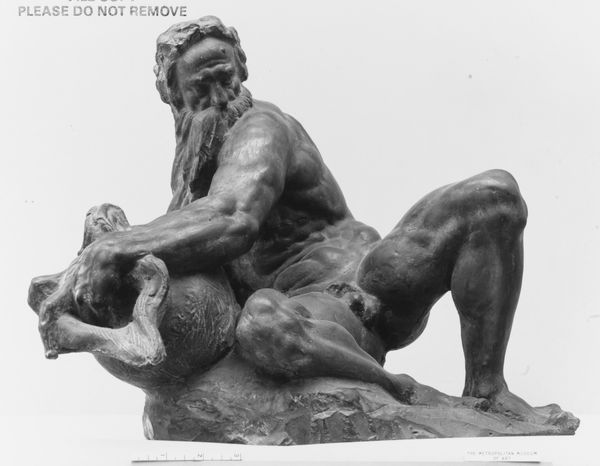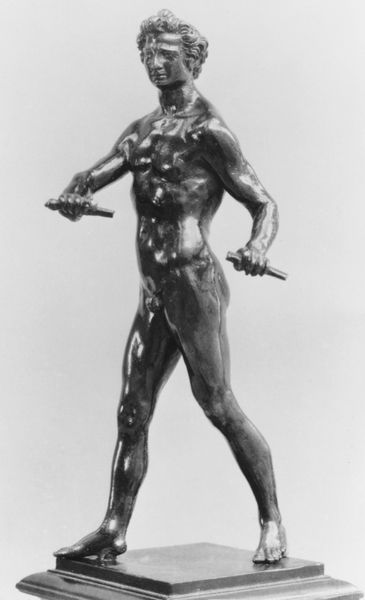
sculpture, marble
#
high-renaissance
#
sculpture
#
figuration
#
11_renaissance
#
sculpture
#
decorative-art
#
marble
#
nude
Dimensions: Overall: 15 1/2 × 28 × 10 in. (39.4 × 71.1 × 25.4 cm); Base: 9 × 20 1/2 × 11 in. (22.9 × 52.1 × 27.9 cm)
Copyright: Public Domain
Editor: This is Michelangelo's marble sculpture, "The Day," created sometime between 1595 and 1605. He looks so pensive. What do you see when you look at this piece? Curator: Initially, I'm struck by the anatomical precision contrasted with the implied torsion. Notice the contrapuntal arrangement of limbs; the flexed arms counteract the extended legs, creating a dynamic tension within the static medium. Editor: Yes, the muscles are so detailed! But he also seems unfinished. Was that intentional? Curator: Ah, the non-finito. Observe how the rough-hewn textures coexist with passages of highly polished surfaces. Consider this a deliberate strategy. Michelangelo often exploited the interplay of the raw and refined to emphasize the inherent materiality of the marble itself. The viewer becomes acutely aware of the artist’s process. Editor: So, the process itself becomes part of the meaning? The way he carved it? Curator: Precisely. How does this compositional strategy affect your understanding of the piece, given its title: "The Day?" Editor: Maybe the rawness represents the unfinished potential of a new day, or the struggle to realize it? Curator: An interesting interpretation. Perhaps also reflecting the unfinished state of human endeavor, or even the internal struggle to overcome oneself. What might the sculpture lose, do you think, if that rawness was absent? Editor: The tension, definitely. It wouldn’t be as compelling, maybe just another idealized form. Thank you, I've learned to see the statue differently. Curator: The value resides within this exercise in observing the artistic structure.
Comments
No comments
Be the first to comment and join the conversation on the ultimate creative platform.
